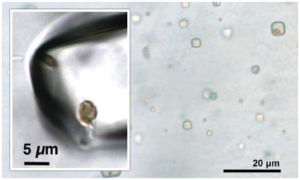Trapped in an 830-million-year-old rock salt crystal, scientists have discovered the potential remnants of prokaryotic and algal life which they say may – just may – still be alive.
In an extraordinary find, researchers at West Virginia University were able to identify tell-tale signs of prokaryotes and eukaryotes trapped inside halite crystals that are a staggering 830 million years old. These life forms were essentially frozen in time when the salt crystals formed eons ago, and could therefore provide scientists with invaluable insights into what environmental conditions were like in ancient times.
The discovery was made after researchers used non-invasive light petrography and UV-visible light petrography on halite crystals extracted from deep below Australia’s Browne Formation. Although this area is a desert now, millions of years ago it was an ancient sea teeming with marine microbial life.
Five foreigners remanded on charges of arson as fire in Evros rages
“As halite crystals grow in saline surface waters, it traps parent water in primary fluid inclusions,” said Sara Schreder-Gomes from the Department of Geology and Geography at West Virginia University.
“In addition to trapping parent waters, they can trap any solids that were in the water near/on the crystal face.”
Read more: Geologyin
Ask me anything
Explore related questions





